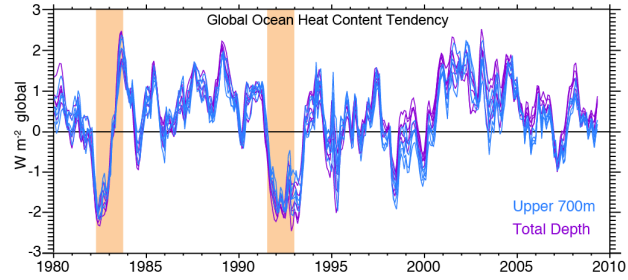SSDD
Gold Member
- Nov 6, 2012
- 16,672
- 1,966
- 280
THE HOCKEY SCHTICK: Trenberth debunks himself: The oceans didn't eat the global warming 'missing heat'
Kevin "it's a travesty!" Trenberth has published a new paper today in the Journal of Climate, which shows that the rate of change of global ocean heat content has decreased since ~2001, contradicting his prior claim that the 'pause' of global warming can be explained by an increase in the rate of ocean 'missing heat' uptake.

Fig 5 from Trenberth's new paper showing the rate of change in global ocean heat content decreased since ~2001 throughout the 'pause'
Trenberth's new paper claims the Sun is responsible for 15% of climate change on decadal timescales, but his analysis conveniently ignores hundreds of peer-reviewed published papers finding solar amplification mechanisms including via clouds and ENSO that alone can account for 95% of climate change over the past 400 years.
The paper can be read HERE
Kevin "it's a travesty!" Trenberth has published a new paper today in the Journal of Climate, which shows that the rate of change of global ocean heat content has decreased since ~2001, contradicting his prior claim that the 'pause' of global warming can be explained by an increase in the rate of ocean 'missing heat' uptake.

Fig 5 from Trenberth's new paper showing the rate of change in global ocean heat content decreased since ~2001 throughout the 'pause'
Trenberth's new paper claims the Sun is responsible for 15% of climate change on decadal timescales, but his analysis conveniently ignores hundreds of peer-reviewed published papers finding solar amplification mechanisms including via clouds and ENSO that alone can account for 95% of climate change over the past 400 years.
The paper can be read HERE



